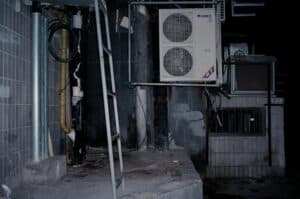Key Takeaways
- Proper AC installation is crucial for achieving reliable indoor comfort and substantial energy savings.
- Accurately sizing AC units prevents wasted energy, costly repairs, and uneven cooling throughout the home.
- Modern AC features like programmable thermostats, variable-speed compressors, and energy-efficient designs boost system performance and convenience.
- Scheduled maintenance routines are key to maximizing AC lifespan and preventing unexpected breakdowns.
- The rise of sustainable cooling technologies and eco-friendly practices offers greener, quieter, and more efficient alternatives for modern homes.
The Role of Quality Installation in Home Cooling
An air conditioning system is often the beating heart of summer comfort in households around the globe, but not all installations deliver the comfort and savings homeowners expect. Quality installation is much more than a checklist exercise—the foundation determines how your cooling system performs for many years. Improper installation leads to energy waste, frequent malfunctions, and underwhelming comfort, quickly turning a promising new investment into a continuous source of frustration. That’s why it’s essential to select the right contractor and carefully oversee each stage of the installation process.
An experienced professional ensures that each component, from ductwork to controls, is sized and positioned for peak operation. With a precision installation, cool air moves freely to every room, and your cooling bills shrink, often providing year-round savings. Thoughtful installation also reduces the risk of breakdowns or costly mid-season repairs, letting you relax and focus on what matters most during the hottest months.
Finding the Right AC Unit for Your Space
Each home presents different challenges when selecting the perfect AC unit. It’s easy to assume that a larger or more powerful system will guarantee comfort, but this common misconception often backfires. Oversized systems cool air rapidly, but don’t run long enough to control humidity, leaving interiors feeling damp and uncomfortable. Conversely, an undersized unit works overtime to reach target temperatures, shortening system life and resulting in persistent energy waste. Experts recommend using proven calculations—such as the industry-standard Manual J method—to assess the precise needs of each home by factoring in square footage, window placements, insulation, and even daily occupancy patterns. Many homeowners only discover the value of installation quality when it’s time to replace a failing or outdated air conditioning system.
The extra attention paid at this early stage pays off every day thereafter. With equipment that matches your home’s requirements, you’ll experience quieter operation, consistent humidity control, fewer repair calls, and uninterrupted comfort on the hottest afternoons. Homeowners who prioritize proper sizing report noticeable improvements in their quality of life and often see measurable savings on bills compared to their old, mismatched equipment.
Features to Consider in Modern AC Systems
Air conditioning technology evolves quickly; today’s systems are leaps ahead in comfort and control. Energy Star-certified units deliver cool air using approximately 8% less energy than traditional models, making them a wise choice for budget-minded shoppers. Programmable and smart thermostats make adjusting your indoor climate easier than ever, from across the room or the country, ensuring comfort is waiting when you get home, without consuming unnecessary energy while you’re away. Variable-speed compressors allow the system to modulate its output, delivering the exact cooling required instead of running at full blast unnecessarily, which is especially helpful during milder weather or at night. According to the U.S. Department of Energy, improper AC installation can reduce system efficiency by up to 30%, resulting in higher electric bills and inconsistent cooling.
While these advanced features may come at a premium, the returns are compelling: lower monthly costs, longer equipment life, and a quieter, more convenient home environment. Many homeowners also appreciate the data insights and automated alerts most modern thermostats provide, further simplifying system care and troubleshooting.
Maintaining Your System for Peak Performance
- Replace or clean filters once or twice per month, especially during periods of heavy use, to prevent dust buildup and restricted airflow.
- Arrange annual duct inspections to check for leaks, punctures, or insulation breakdown that might undercut the system’s effectiveness.
- Book a professional tune-up at the start of every cooling season to catch small issues—like refrigerant leaks or faulty sensors—before they become expensive repairs.
- Test and recalibrate your thermostat periodically, giving you confidence that temperatures remain accurate and consistent throughout your home.
Maintenance isn’t just a chore—it’s an investment in the long life of your equipment and the uninterrupted comfort of your family. Regular upkeep delivers quieter, more efficient summer cooling while lowering the risk of sudden breakdowns on days you need AC most.
Eco-Friendly Cooling Trends
Interest in sustainable cooling is accelerating as new technologies reach the mass market and become cost-competitive. Low-global-warming refrigerants, such as R-32 and R-454B, dramatically reduce environmental impact without sacrificing performance. Inverter-driven compressors offer precise, variable output that matches real-time needs instead of cycling on and off at full power, which improves energy efficiency and provides a gentler, more consistent cooling experience. As highlighted in The New York Times’ recent reports on green cooling, these advances help curb emissions and result in quieter operation and lower utility bills for families and businesses alike.
For those looking to go further, pairing high-efficiency AC systems with solar panels offers a path to near-zero-energy climate control, especially during sunny summer when cooling loads are highest. Small changes, such as adopting smart thermostats or better insulation, can collectively move households toward a lower carbon footprint without giving up daily comfort. Sustainability is quickly becoming as much about affordability and resilience as the environment.






